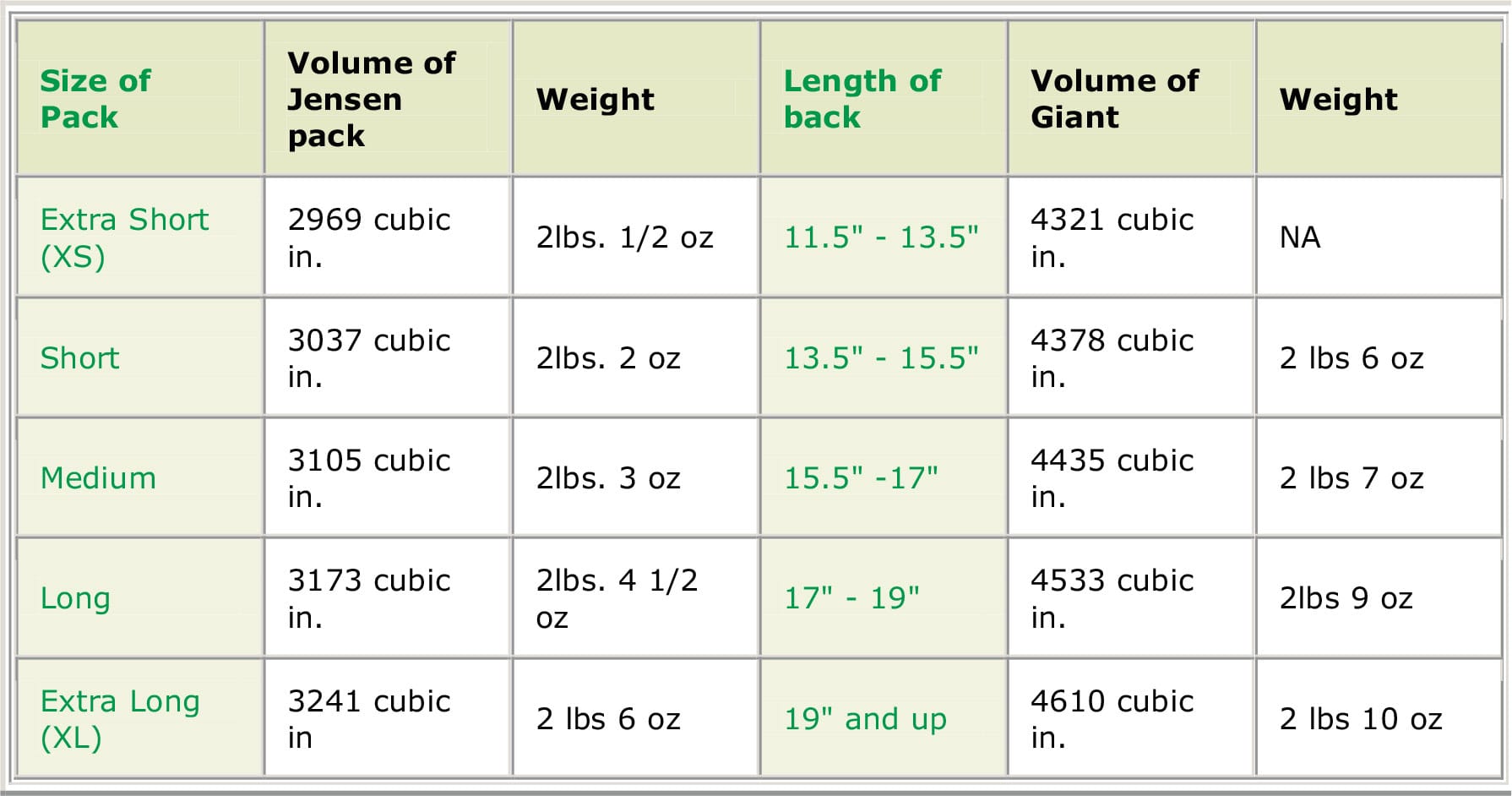
RMW Heritage Backpacks
made in USA since 1971
RMW Heritage Backpacks are Made in USA -100%, and most of the components- fabrics, buckles, etc. are domestically manufactured. Our packs are not factory made they are made by elves, in small numbers, in our cottage workshops.
RMW packs have a recurring theme, simplicity. These Heritage packs have fewer pieces and consequently are more durable since there are fewer seams . The packs all have a similar DNA utilizing leather for structural components and for it’s inherent aesthetic quality. Nickel plated steel buckles are also used on our shoulder straps, to further the vintage style of the packs. These buckles are exceptionally durable.
Back in production since 2008, Rivendell Mountain Works is pleased to once again be producing The Jensen Pack™. This is a true, vintage, hand made backpack. Also back in production are many of the other original Rivendell Mountain Works designs from the late 70’s.
Our packs are not “reproductions” we make these packs from the original patterns and to the same high standards that Rivendell Mountain Works became known for in the 1970’s.
The Jensen Pack™

The Jensen Pack™ RMW’s signature Heritage Backpack
When Rivendell Mountain Works introduced The Jensen Pack™ to the climbing world in 1971, it quickly became one of the most widely imitated packs of all time.
This is the classic design that launched the soft pack revolution. The Jensen Pack™ utilizes internal partitions that give the pack its characteristic shape. It is manufactured in 5 sizes to achieve a superb, individual fit
Don Jensen’s ingenious design uses the load to support the pack, and molds itself to your back to afford unmatched stability and balance when backpacking or climbing in mountain terrain. We have always loved what this totally “soft” pack is able to do without a rigid frame. The Jensen Pack™ and its larger cousin the Giant Jensen™ are considerably lighter than most packs of equal carrying capacity.
It’s hard to improve on a design that approached perfection to begin with, but in reproducing these Heritage Backpacks we couldn’t resist adding a couple of minor improvements, based on the lessons we learned from a lifetime of using these packs ourselves.
First, we added a compression strap to the lower compartment to make it easier to pack a sleeping bag and reduce stress on the zipper. Note: The Jensen Pack™ was designed in the heyday of goose down mountaineering bags, and a large synthetic-fill sleeping bag will not fit into this compartment. If you have such a sleeping bag, we recommend either packing it in the top compartment, or purchasing a Giant Jensen™ with it’s larger lower compartment.
Second, we’ve lengthened the left side of the hip belt and attached the buckle with a slide. This allows for a much greater adjustment to accommodate people with wider hips. Also, should the buckle ever be damaged, it will be easier to replace.
Third, all of the ERV(extra rugged version) packs now include an inner pocket(upper back) for small items and a tiny pocket with key clip at the top of the vertical divider. We are also experimenting with a system for clipping in water bottles to the bottom corners of the lower compartment.
Design
Design
Clever compartmentalization gives the pack it’s characteristic shape as it is filled. The vertical partition in the center of the pack achieves three major functions in the design:
It creates the “S” curve which fits so comfortably against the wearer’s back, important for proper weight distribution and maneuverability. It gives the pack its slim profile, minimizing the distortion of your center of gravity. It forms two vertical columns which transfer their weight to the lower part of the pack. These columns terminate at a horizontal tube, which wraps around and rests on your hips. A belt extending from the ends of the horizontal tube distributes the weight smoothly around the hips. Above the two vertical columns is a large undivided area that keeps weight as closely over the shoulders as possible.
Built for the Elements
All seams of stress are double stitched with No. 16 nylon thread. Points of great stress are backed with webbing and/or leather reinforcement. YKK No. 10 coil zippers are used throughout. These durable, self-repairing zippers are recognized everywhere as the industry’s state of the art. Each zipper is equipped with dual sliders, so compartments can be accessed from anywhere along the zipper.Generous weather flaps protect the zippers from abrasion and keep rain out of the pack’s contents.

The outer pack is constructed from CORDURA® brand fabric, which is far more durable and abrasion resistant than most fabrics typically used in backpacks today. Fabric pieces are individually hot-cut to seal the edges and prevent fraying. The back panel in contact with the wearer’s back is covered with a polyester/nylon blend of “corduroy” for enhanced comfort when wearing the pack without a shirt in warm weather. We sandwich a layer of polyethylene between the corduroy and the back CORDURA® fabric to prevent perspiration wicking into the pack. Internal baffles are made from 420 denier nylon pack cloth to reduce weight. We do not claim The Jensen Pack™ is waterproof – no fabric pack is – but you can minimize water penetration of seams by applying a seam sealant to all sewn seams, which we recommend for all packs including ours.
Our stainless waist buckle is extremely lightweight, quick releasing, easy to adjust, and will not slip. For tie-on points, our packs are fitted with Rivendell’s exclusive barbell-shaped leather accessory patches. The leather we use is an 6-8oz. latigo for durability and weather resistance. The barbells are durable and highly functional, and they give The Jensen Pack™an aesthetic touch rarely seen in packs anymore. We think of the barbell leathers as Don Jensen’s personal signature.
Getting Sized Right

Getting Sized Right !
Because of the closely contoured fit, we offer each of our Jensen-style packs in five different lengths. A poor fit renders the design as useless as an ill-fitting boot. The wearer’s height is not always a good indication of the exact size needed and therefore we have developed a system for determining the correct size. You will need to have someone assist you with these measurements.
It is helpful to remove your shirt, to more clearly see and mark your measurements.
1. Stand erect with your arms loose at your sides and have your assistant take a ruler and connect the tops of the shoulders. The intention is to determine the point where the shoulder straps cross the shoulders, which should be some where between the base of the neck and the outside joint, of the shoulder
2. With a chalk or pen, make a short, horizontal mark, on your back, along the TOP edge of the ruler, near the center of the spine.
3. Now take your thumbs and place them on the topmost crest of your hips, at your sides with your elbows out.
4. Again, have your friend connect your thumbs, with the ruler, and make a mark at the center of your spine.
Now measure the distance between the two marks and compare it to the table below. With your size selection, please also include your height and pant inseam. These three different measurements will help us make sure you get the correct size.

Stowing Your Gear
Stowing Your Gear
Proper loading is essential to allow these packs to achieve their full
potential for comfort and balance. The packs do not need to be fully
loaded to work correctly.
If only the bottom compartment is filled, The Jensen Pack™ functions
as a fanny pack with suspenders, and the entire load is carried by the
hips. As additional gear is added in the vertical tubes, it assumes the characteristics of a day pack, with the load distributed to the hips and shoulders.
As the pack continues to fill, it takes on more of its characteristic shape, and distributes the load even more efficiently. Of course, care should be taken to avoid placing hard or sharp objects against one’s back, which is easily accomplished by putting these items in first, and soft items in last. Since the pack is most easily filled when it is laying down, this is simpler than it might seem.

As previously mentioned, The Jensen Pack™ was design to carry the sleeping bag in the lower compartment, but alternatively this compartment can be used for clothing and the sleeping bag can be stuffed into the top compartment. The lower compartment should be as full as is possible, to maximize its function in transferring the weight in the upper part of the pack to one’s hips. It’s generally easier to fill the lower compartment first, and then tightly pack gear in the bottom of the vertical tubes.
With the pack laying on its back, put heavier, odd shaped gear in first. When the pack is almost full, zip each slider up a few inches on each side, then stuff clothing or other soft items all the way down the vertical tubes until they’re full. Then close the zipper a little more, and stuff in some more gea until the entire back is padded and the pack contains all your gear. These packs are sensitive to unbalanced loads. Therefore the packer must become aware of the weight, shape and size of the articles to be carried, and give some thought to the packing scheme that will produce optimu comfort and weight distribution. In general, you want the center of gravity as close to your back as possible, and slightly below the shoulders.
Customize

Customize
We are happy to do custom work for you Please describe what you would like and we will put together a quote for you. Some of the custom items are mentioned below are not included in the website ordering interface.
There are some standard custom features that are part of the ERV pricing.
Extra Rugged Version (ERV)
This is the way I build all my personal packs: Instead of a single layer of cordura, I add in extra layers of various coated fabrics at critical points in the pack
Those locations are: The entire lower compartment and the area of the pack above the corduroy. This added water protection is extremely valuable if you plan on using the pack in wet climates for prolonged periods. Combined with the rainliner, it makes for a very weatherproof pack.
All ERV packs will be fitted with snaps, so that pockets may be added at a later date. The inner pack cloth area of the upper back is now built with a small zippered pocket for small items. There is also a tiny pocket with key clip at the top of the vertical divider.
ERV’s also come with 1/4” lacing pre-tied to all zipper sliders, on the pack. Barbell leather is also beefier. Waxed “double shoulder” is used for greater longevity. By popular request, we are now adding a piece of “crossgrain ribbon” to the inside of the lower zipper. This helps protect your sleeping bag from being snagged by the zipper.
Rainliner/ Raincover
This greatly protects the contents of the pack from inclement weather, and is not an encumbrance if there is gear lashed to the outside of the pack. The rainliner is made from coated ripstop nylon, and is attached to the inside of the pack with velcro. If you desire a liner, we need to add the velcro during the construction of the pack It cannot be added at a later time.
Rivendell’s original raincover for the Jensen Packs, is now available. This will cover the pack even when there is a lot of gear lashed onto the outside of the pack.
